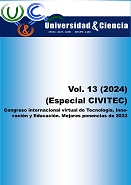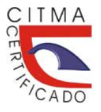Proposed ecotourism route to enjoy nature, food and mezcal, in Oaxaca, Mexico
DOI:
https://doi.org/10.5281/zenodo.12207518Keywords:
ecotourism, natural space, route, wild agavesAbstract
The state of Oaxaca has a very significant biological and cultural diversity that contributes to Mexico, as a country, being considered megadiverse at an international level, a fact that is provided by the states of the South-Southeast region of the country where the state of Oaxaca is located. Oaxaca, whose Mixteca-Zapoteca (Mix-Za) microregion, in its northern part, houses natural ecosystems where dry to semi-dry climates and arid to semi-arid soils predominate. In the forests, the pine-oak-pine ecosystem predominates, which houses the greatest diversity of agaves, which are located in a polygon of approximately one million hectares, which are communal property of the towns that are within that space from where wild agaves or magueyes are extracted from their natural habitat to distill mezcal with ancestral and artisanal distillation processes, which distinguishes them from other mezcals because these are given the name to the drink with the same name as the magueyes in both the Zapotec and Mixtec languages, which are spirit drinks of incomparable flavor, smell, color, persistence, complexity and vessel, far superior to traditional and commercial mezcal extracted from agave or maguey espadín. The main objective of the ecotourism route is to contribute to the improvement in the state of well-being of the inhabitants of the towns that are located along the route and especially to the mezcal producers, so that they receive a better price for their product. whose distillation process is carried out on a very small scale and therefore cannot have greater benefits because they are victims of intermediaries.
Downloads
References
Acampora, T. y Fonte, M. (2007). Productos típicos, estrategias de desarrollo rural y conocimiento local. Revista Opera, (7), 191-212.
Escamirosa, T. C., Guzmán, C., D. L. y Hernández, T., M. (2021). Ruta ecoturística de los mezcales proveniente de agaves silvestres y cultivados en el estado de Oaxaca, México. Innovación y Multidisciplinariedad en la práctica docente: Contribución significativa al aprendizaje. Pág. 886.
Gemitzi, A., Tsihrintzi, V. y Petalas, C. (2010). Use of GIS and Multi-criteria evaluation techniques in enviromental problems. En G. A.Tsihrintzi, y L. C. Jain, Multimedia services in intelligent envroments: Integrated Systems (págs.5-62). Berlin, Heidelberg: Springer-Verlag Berlin Heidelberg.
INEGI. (2021). Uso del suelo y vegetación, escala 1: 250000, serie VII (continuo nacional). https://www.inegi.org.mx/temas/edafologia/
INEGI. (2022). Atlas de Género. https://atlasdegenero.oaxaca.gob.mx/
INEGI. (2022). México en cifras, Indicadores socioambientales del estado de Oaxaca.
https://www.inegi.org.mx/app/areasgeograficas/?ag=20#collapse-Resumen
INIFAP-CONABIO. (1995). Edafología escalas 1:250000 – 1:1000000. Instituto Nacional de Investigaciones Forestales y Agropecuarias y la Comisión Nacional para el conocimiento y Uso de la Biodiversidad. México.
Sectur Oaxaca (2022). Secretaría de Turismo del Estado de Oaxaca. https://www.oaxaca.gob.mx/sectur/informacion-de-interes/pueblos-magicos/.
Sectur – Federal (2024). Secretaría de Turismo del Gobierno Federal. Análisis del Turismo Alternativo. http://tesis.uson.mx/digital/tesis/docs/13328/Capitulo3.pdf
SIAP-SIACON (2022). El Servicio de Información Agroalimentaria y Pesquera. https://www.gob.mx/siap/documentos/siacon-ng-161430.
Toledo, Arcelia (2020). Diagnóstico participativo del Proyecto de Desarrollo Territorial (PRODETER-SADER, 2020) de las comunidades agrupadas en la Asociación de Pueblos Mancomunados de la Región Mixteca alta del estado de Oaxaca.
Downloads
Published
How to Cite
Issue
Section
License
Copyright (c) 2024 Universidad & ciencia

This work is licensed under a Creative Commons Attribution-NonCommercial-ShareAlike 4.0 International License.





















